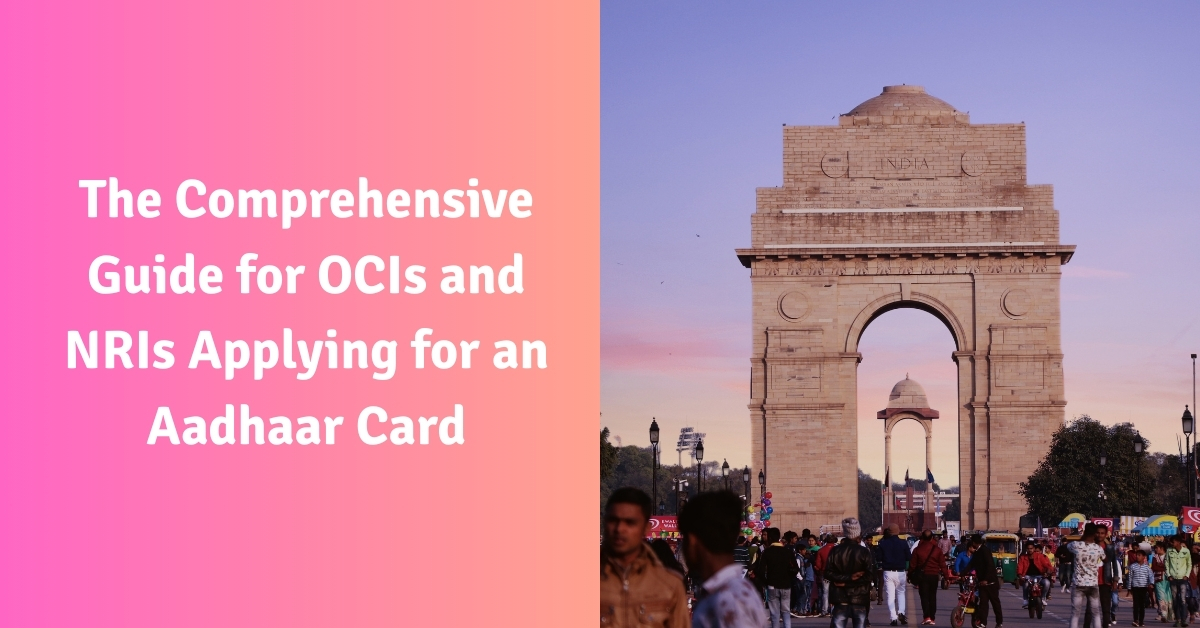The Comprehensive Guide for OCIs and NRIs Applying for an Aadhaar Card

For many Overseas Citizens of India (OCIs) and Non-Resident Indians (NRIs), the Aadhaar card remains a crucial yet elusive document, essential for seamless financial transactions and accessing services in India. However, the path to obtaining one is fraught with complexities and stringent requirements. This guide delves into the significant hurdles OCIs and NRIs face, offering insights and practical advice to navigate this challenging process.
The 182-Day Residency Conundrum
The most significant obstacle for OCIs in their quest for an Aadhaar card is the mandatory 182-day residency requirement. To be eligible, an OCI cardholder must have resided in India for at least 182 days in the 12 months immediately preceding the date of their application. This rule poses a substantial challenge for those who have built lives and careers abroad, making it difficult to meet this criterion without significantly disrupting their personal and professional commitments.
The verification of this residency period is exceptionally rigorous. Immigration officials meticulously scrutinize passport entry and exit stamps to calculate the precise number of days spent in the country. Even a shortfall of a few days can lead to the rejection of an application, leaving little room for flexibility. This strict enforcement reflects a tightening of regulatory controls aimed at preventing fraud but places a heavy burden on genuine applicants.
The Critical Importance of Flawless Documentation
Beyond the residency rule, the documentation process itself is a major hurdle. Applicants are required to submit a valid passport, their OCI card, and proof of an Indian address, which could include utility bills or a rental agreement. A key challenge lies in ensuring that all submitted documents are perfectly aligned. Even minor discrepancies, such as variations in name spellings or inconsistent dates between documents, can be grounds for denial.
The verification process, now often handled by revenue officials, has become more stringent, leading to significant delays and application backlogs, particularly in major metropolitan areas like Mumbai, Delhi, and Bangalore. This increased scrutiny demands that applicants are exceptionally diligent and organized in preparing their documentation to avoid potential setbacks.
The Mandatory Physical Presence and Biometric Data Collection
A significant logistical challenge for OCIs and NRIs is the requirement to be physically present at an Aadhaar Seva Kendra in India for the collection of biometric data. This includes fingerprints, iris scans, and a photograph. Currently, there are no provisions for remote or overseas enrollment through Indian embassies or consulates. This lack of infrastructure for the diaspora means that applicants must travel to India specifically for this purpose, incurring substantial costs in terms of time and money.
This requirement underscores a gap in creating diaspora-friendly policies and can undermine the convenience that digital identity systems are intended to offer. For those living and working abroad, arranging a trip to India solely for this purpose can be a significant undertaking.
The Indian Mobile Number Catch-22
The Aadhaar application process mandates an Indian mobile number for registration and receiving OTPs for verification; international numbers are not accepted. This creates a classic “catch-22” situation for many OCIs and NRIs who do not maintain an active Indian mobile number. The circular problem arises because obtaining a new SIM card in India often requires an Aadhaar card.
While workarounds exist, such as using a family member’s Indian number or maintaining an active number during visits, this remains a practical obstacle that exemplifies the difficulties in integrating digital identity with other services, especially for those not permanently residing in India.
Life Without Aadhaar: The Practical Implications and Potential Reforms
The absence of an Aadhaar card can lead to significant limitations for OCIs and NRIs in India. It can create difficulties in opening bank accounts, conducting property transactions, obtaining a new SIM card, and accessing various government services. While the OCI card is a valid travel document, it is often not accepted as a substitute for Aadhaar by many service providers, leading to considerable frustration.
The processing times for Aadhaar applications can be lengthy and unpredictable, ranging from a month to over six months. Inconsistent document acceptance and interpretation of rules across different regions further add to the uncertainty.
The Indian government is aware of these challenges, and there have been discussions about potentially easing the provisions for OCIs, including the possibility of remote enrollment. However, as of now, no official changes have been implemented. This leaves OCIs and NRIs in a position where they must approach the application process with realistic expectations and meticulous preparation.
Conclusion
For Overseas Citizens of India and Non-Resident Indians, obtaining an Aadhaar card is a complex and often frustrating endeavor. The stringent 182-day residency rule, coupled with rigorous documentation and verification processes, the need for physical presence in India, and the requirement of an Indian mobile number, creates a formidable set of challenges.
While the Aadhaar card is key to unlocking a range of essential services in India, the current framework places a significant burden on the Indian diaspora. As discussions for reform continue, it is hoped that the process will become more accommodating to the realities of global Indians. Until then, prospective applicants must navigate the existing system with careful planning, patience, and a thorough understanding of the requirements.
FAQs
- What is the primary eligibility criterion for an OCI to apply for an Aadhaar card?
Ans- An OCI must have resided in India for at least 182 days in the 12 months immediately preceding the date of application. - Is physical presence in India mandatory for an Aadhaar application?
Ans- Yes, applicants must be physically present at an Aadhaar Seva Kendra in India for biometric data collection. Remote enrollment is not currently available. - What documents are required for an OCI’s Aadhaar application?
Ans- Key documents include a valid foreign passport, OCI card, and proof of an Indian address. - Can I use an international mobile number for Aadhaar registration?
Ans- No, only an Indian mobile number can be used for Aadhaar registration and verification. - What happens if there are minor discrepancies in my documents?
Ans- Even minor inconsistencies in names or dates across your documents can lead to the rejection of your application. - Are NRIs with Indian passports also subject to the 182-day rule?
Ans- No, as of a 2019 amendment, NRIs holding a valid Indian passport can apply for Aadhaar upon arrival in India without needing to meet the 182-day residency requirement. - How long does the Aadhaar application process typically take for OCIs?
Ans- Processing times can vary significantly, from one month to over six months, due to strict verification and regional inconsistencies. - What are the consequences of not having an Aadhaar card in India?
Ans- Without an Aadhaar, you may face difficulties with banking, property transactions, obtaining a SIM card, and accessing other government and digital services. - Is the government considering any changes to make the process easier for OCIs?
Ans- There are ongoing discussions about potential reforms, such as remote enrollment, but no official changes have been implemented yet. - What is the most crucial advice for an OCI planning to apply for Aadhaar?
Ans- Plan for an extended stay in India to meet the residency requirement, ensure all your documents are meticulously organized and consistent, and apply as early as possible during your visit.
Disclaimer: The information provided here is for educational and informational purposes only and should not be construed as financial, legal, or tax advice. Consult with a qualified professional before making any investment decisions. We do not accept any liability for errors or omissions in this information nor any direct, indirect, or consequential losses arising from its use.



